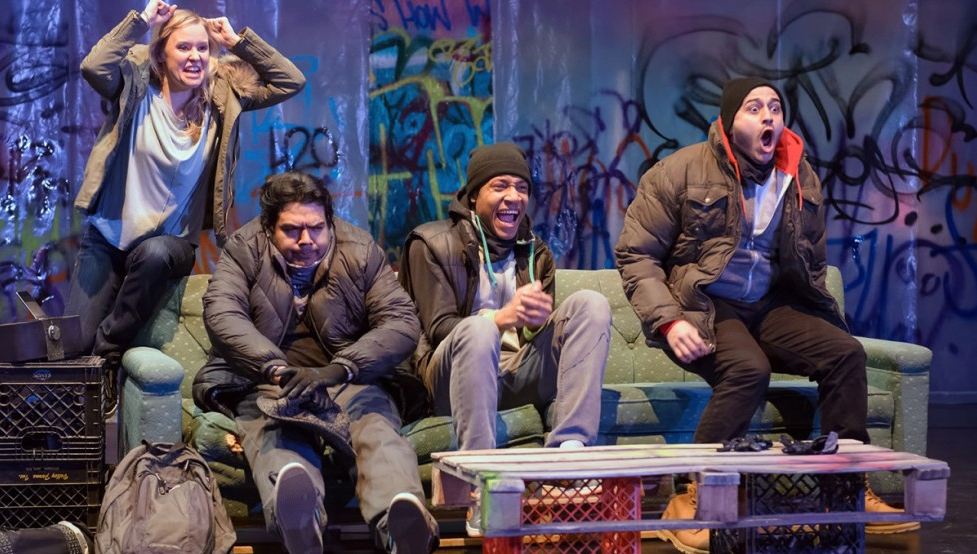Staff Chat posts feature articles and news that the C1 team discusses as part of our weekly all-staff meeting. We’d love to hear your thoughts too — hit us up on Facebook or Twitter!
♦♦♦♦♦
This week’s Staff Chat will focus on the conversation around the play This is Modern Art (Based on True Events), a Steppenwolf for Young Adults production co-written by Idris Goodwin and Kevin Coval. We’re looking at two reviews of the play and a few articles that examine the critical reception of the piece:
- — REVIEW: ‘This Is Modern Art’ at Steppenwolf Theatre By Chris Jones
- — Steppenwolf’s deeply misguided ‘This Is Modern Art’ spray paints all the wrong messages By Hedy Weiss
- — Are These Modern Reviews of ‘This Is Modern Art’? By Howard Sherman
- — Playwrights Rip Trib and Sun-Times Theater Critics Over Graffiti Play By Paul Biasco
- — CREATE a movement: the ART of a revolution By Hallie Gordon

Kelly O’Sullivan (from left), J. Salome Martinez Jr., Jerry MacKinnon and Jessie D. Prez in the Steppenwolf Young Adults production of “This Is Modern Art.” (Photo: Michael Courier)
The play, inspired by a real incident, follows a group of Chicago teens who decide to cover the Art Institute of Chicago’s Modern Wing in graffiti art. In their reviews, critics Jones and Weiss briefly touch on the artistic aspects of the play (which they seem to praise), but spend most of their columns taking the show to task for its portrayal of graffiti artists. From Jones:
But here is what “This is Modern Art” barely even mentions: Graffiti comes at a price. It can be invasive, self-important and disrespectful of the property of others — and plenty of struggling folks have had to clean graffiti off something they own or love. Graffiti can be inartful, for goodness sake. More importantly yet, graffiti had the effect of making people feel unsafe in the city. It terrified people. It was only when public officials declared themselves determined to wipe it out that cities finally came back to life, with broad benefits.
You wanna go back to riding public transportation in New York or Chicago in the 1980s? I do not. You do not have to be conservative or somehow not down with youth to think it reprehensible that these issues do not have a place in a show for schools that is quite staggeringly one-sided.
Weiss continues this line of thought in her review, though she takes it even further, stating:
This play is a wildly wrong-headed and potentially damaging work — one that fails to call “vandalism” by its name, and rationalizes and attempts to justify that vandalism in the most irresponsible ways. It also trades in all the destructive, sanctimonious talk about minority teens invariably being shut out of opportunities and earmarked for prison in a way that only reinforces stereotypes and negative destinies. Counterproductive in the extreme, it deepens and solidifies racial and class divisions and a sense of hopelessness among those who need to dwell on possibility.